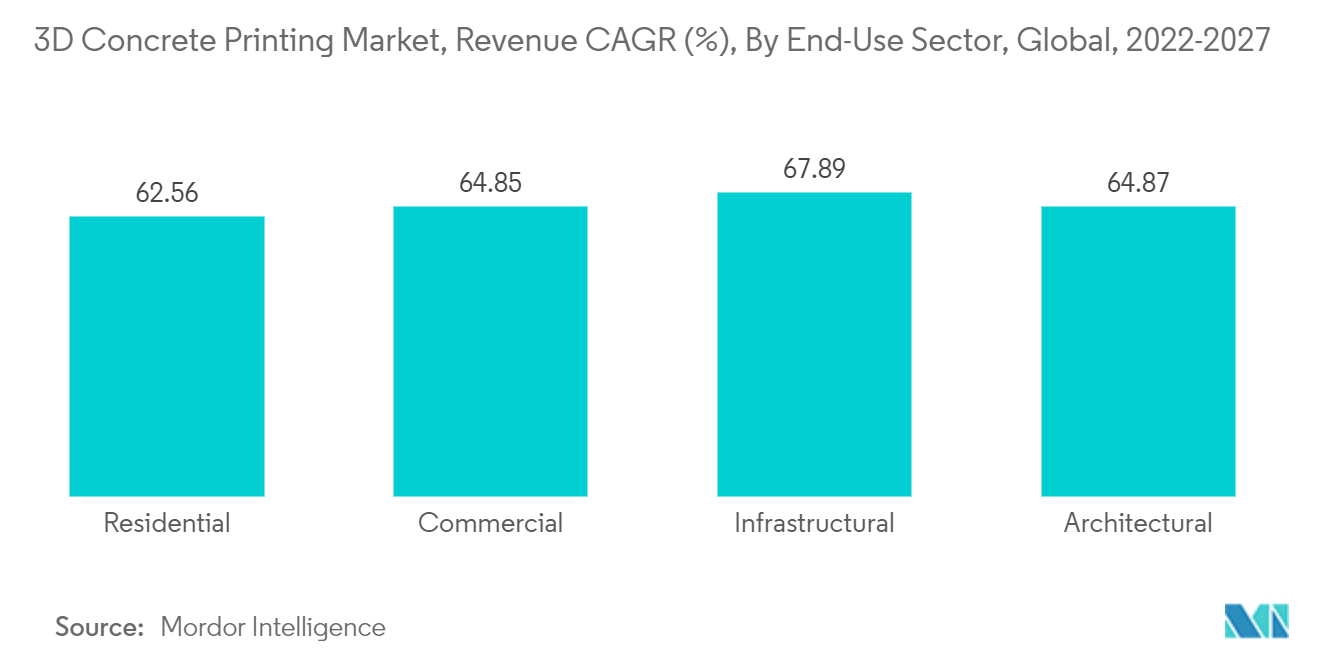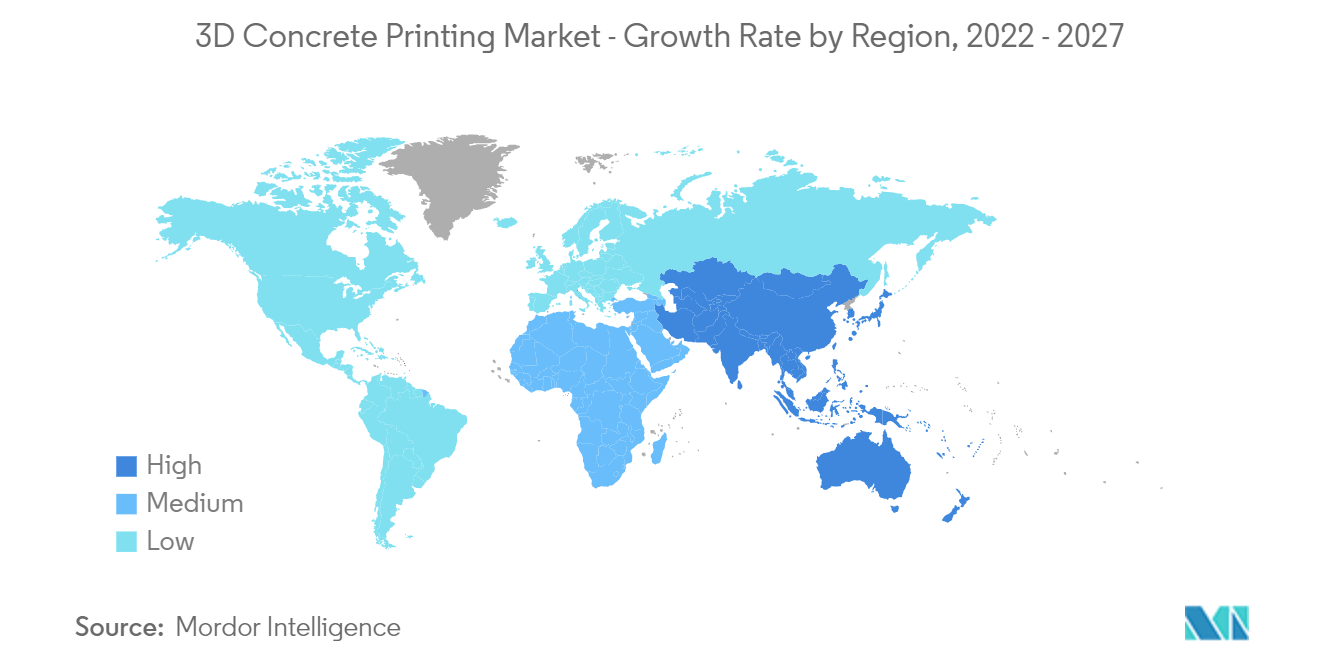Market Trends of 3D Concrete Printing Industry
This section covers the major market trends shaping the 3D Concrete Printing Market according to our research experts:
Infrastructural Sector to Dominate the Market
- The infrastructural market for 3D concrete printing has grown significantly, particularly in Asia-Pacific and other growing nations. In nations like India, the infrastructure sector propels the expansion of related industries like townships, housing, built-up infrastructure, and construction development projects, acting as a driver for economic growth in India.
- In 2021, the use of 3D printing in home construction surged. As a result of the rapid growth in urbanization, a need for faster construction of infrastructural structures emerged in several growing countries.
- On October 2022, MiCoB Pvt. Ltd stated that it had achieved a record delivery speed of 30 days for a 3D concrete printed runway controller hut to the Military Engineer Services for the Airbase in Pune. The finished building is India's first hybrid "G+1" structure to combine 3D concrete printing with a prefabricated steel frame.
- Project Milestone is a projected residential complex in Eindhoven, the Netherlands, consisting of five 3D-printed structures designed by Houben/Van Mierlo Architects. The first structure, a single-story single-family dwelling, has been built as of April 2021.
- According to IBEF, in the union budget 2022-23, the government has given a massive push to the infrastructure sector by allocating INR 10 lakh crore (USD 130.57 billion) to enhance the infrastructure sector.
- India intends to invest USD 1.4 trillion in infrastructure through its "National Infrastructure Pipeline." Infrastructure-related operations in FY21 contributed 13% of the USD 81.72 billion in overall FDI inflows.
- Thus, the abovementioned factors are expected to drive the demand for 3D concrete printing during the forecast period.

Asia-Pacific Region to Dominate the Market
- The Asia-Pacific construction sector is the largest in the world and is increasing at a healthy rate, owing to the rising population, increase in middle-class income, and urbanization. Increasing infrastructure construction activity is the major driver for the Asia-Pacific construction sector.
- China is one of the leading countries in the Asia-Pacific region that emerged as a major 3D concrete printing consumer due to strong government support, efforts toward standardization, and expanding application segments.
- For instance, a team from Tsinghua University's School of Architecture in China constructed a 26.3-meter-long concrete bridge, which is considered to be the world's longest 3D-printed bridge. In less than 450 hours, two robotic-arm 3D printing systems created 176 concrete components for the new 3D-printed bridge.
- In India, 3D printing technology appears to be an effective solution to the housing scarcity problem, which has been one of the primary worries in the past owing to population growth. For example, Tvasta Manufacturing Solutions, a Chennai-based business, recently completed a 500-square-foot house in 21 days using a 3D printer.
- According to Ipsos Global Infrastructure Investor Association, in 2021, 77% of respondents in China stated that they were very or fairly satisfied with the national infrastructure. Moreover, 45% of respondents in Malaysia said that they were either very or fairly satisfied with Malaysian national infrastructure.
- Thus, construction activity has been growing in the Asia-Pacific, which is expected to boost the 3D concrete printing market.


